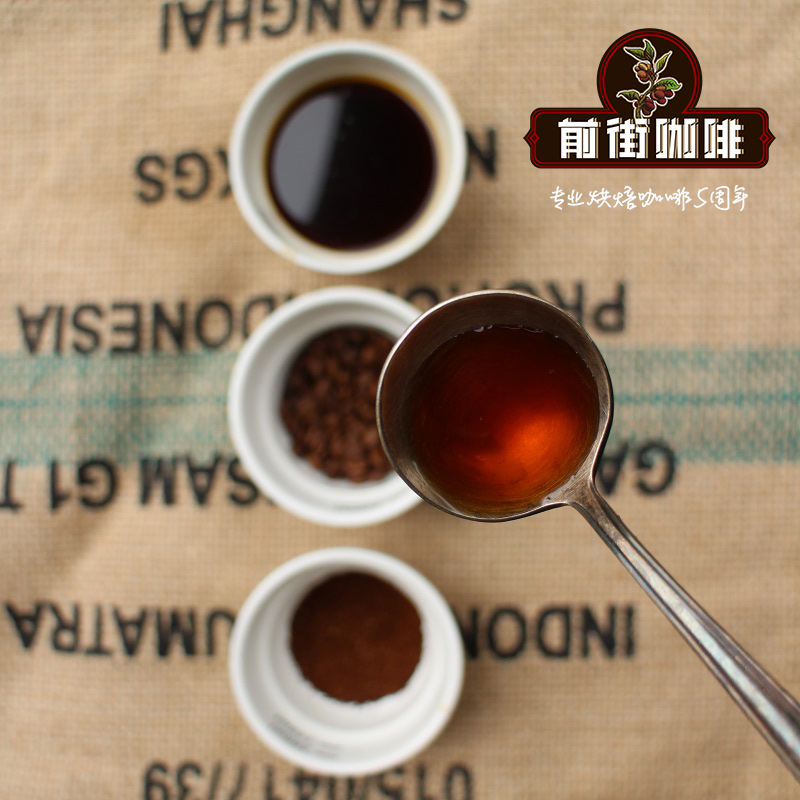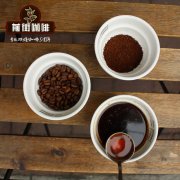Coffee treatment | what is the difference between carbon dioxide impregnation and anaerobic fermentation?

Without an in-depth study of biochemistry, we can assume that all coffee (with different treatments) has undergone a certain degree of fermentation.
Fully washed coffee must go through an artificial fermentation stage, in which coffee seeds are fermented after the peel and pulp are removed (sometimes the coffee seeds are placed in water, sometimes no water is used in the fermentation process)-and then cleaned, graded and dried. Re-soaking and washing the coffee after fermentation usually reduces the number of microbes, and the fermentation continues at this stage.
To be clear, even if oxygen exists in the environment of fermentation microorganisms, oxygen will not be used in a specific fermentation process. Saccharomyces cerevisiae can reproduce in a deoxidized environment at a slower rate than under aerobic conditions. With the continuous introduction of oxygen in the process of yeast fermentation, the yeast grows rapidly and multiplies faster. The yeast carries on aerobic respiration and produces carbon dioxide and water, but not alcohol. Fermented yeast in the absence of oxygen or lack of oxygen converts sugars into carbon dioxide and ethanol. Of course, there are many aerobic microbes that digest / decompose coffee fruit.
In the history of the production of washed coffee, the process / stage of soaking coffee to remove its skin-usually in open-air fermentation tanks, buckets, or even plastic bags-was called "fermentation". Its origin is only a method used by coffee farmers to remove mucus / pectin from coffee seeds. The resulting taste change, while important, was not the original intention of fermenting coffee.
Medium "anaerobic" fermentation has sprung up in the coffee industry. Usually, the coffee is peeled as usual, and then the coffee with pectin is placed in a sealed container (usually made of stainless steel) with a valve that allows the gas to be discharged. This fermentation method can extend the traditional fermentation time of 12-36 hours by several hours, sometimes even days. The types of microorganisms that can survive and actively participate in fermentation are limited by the amount of oxygen in the air, so they are likely to greatly change the final flavor of coffee. Anaerobic coffee has incredible and immediately recognizable flavors, such as gingerbread, cinnamon, licorice, bubble gum or boiled pears.
The main difference between anaerobic fermentation and carbon dioxide impregnation is that during carbon dioxide impregnation, coffee cherries are not peeled (in the whole fruit state) before entering the sealed container. (carbon dioxide impregnation is a term coined in the wine industry, in which the whole bunch of uncrushed grapes are put together in a barrel full of carbon dioxide (in an anoxic environment). The grape particles break and squeeze out juice. separate the grape juice and peel, and then add yeast to ferment. This process allows the use of neutral grape varieties to obtain aromatic wines, which are softer and fruity with distinct aromas of cherry, banana, bubblegum and cinnamon)
In carbon dioxide impregnation fermentation, first, put the coffee cherry in an airtight container with an one-way exhaust valve, which is very similar to the anaerobic method. Since the peel of coffee cherries is intact, it may take days or weeks to ferment. Different pressures in the tank produce different sugars and pectin for microbial decomposition. The coffee near the bottom of the closed container is squeezed by gravity, while the coffee cherry near the top of the closed container is not squeezed (its core is the intracellular fermentation and impregnation of coffee cherries under anaerobic conditions. there are three phenomena at the same time: intracellular fermentation of whole coffee cherry; alcohol fermentation caused by yeast; and impregnation of coffee cherry juice on the solid part of coffee cherry).
Important Notice :
前街咖啡 FrontStreet Coffee has moved to new addredd:
FrontStreet Coffee Address: 315,Donghua East Road,GuangZhou
Tel:020 38364473
- Prev

One of the four famous beans in the Caribbean | introduction to the flavor characteristics of sea tortoise beans washed in Ecuador
Origin: Ecuador Galapagos Islands altitude: 1700-2000 m soil: volcanic soil varieties: iron pickup treatment: washing grade: SP1 flavor: melon pleasant and clear sweet fruit, soft spice aroma, balanced and delicate, dense creamy feeling. The producing area is more than 900 kilometers off the coastline of Ecuador, which is famous for its host country in South America, longitude 90 degrees west of the equator.
- Next

The new breed of coffee resistant to leaf rust in Manor Manor got a high score of 90 in Nicaragua's Excellence Cup Competition.
The new coffee variety, called Centroamericano, is a F1 mating variety that scored 90 points in the Excellence Cup and was awarded the highest honor of the Presidential Award. This coffee won the second place in the Excellence Cup and came from Mr. Moreno's Bull Manor. Bull Manor is located in the northern province of New Serbia in Nicaragua, near the border with Honduras. The jury came from nine countries.
Related
- Beginners will see the "Coffee pull flower" guide!
- What is the difference between ice blog purified milk and ordinary milk coffee?
- Why is the Philippines the largest producer of crops in Liberia?
- For coffee extraction, should the fine powder be retained?
- How does extracted espresso fill pressed powder? How much strength does it take to press the powder?
- How to make jasmine cold extract coffee? Is the jasmine + latte good?
- Will this little toy really make the coffee taste better? How does Lily Drip affect coffee extraction?
- Will the action of slapping the filter cup also affect coffee extraction?
- What's the difference between powder-to-water ratio and powder-to-liquid ratio?
- What is the Ethiopian local species? What does it have to do with Heirloom native species?

